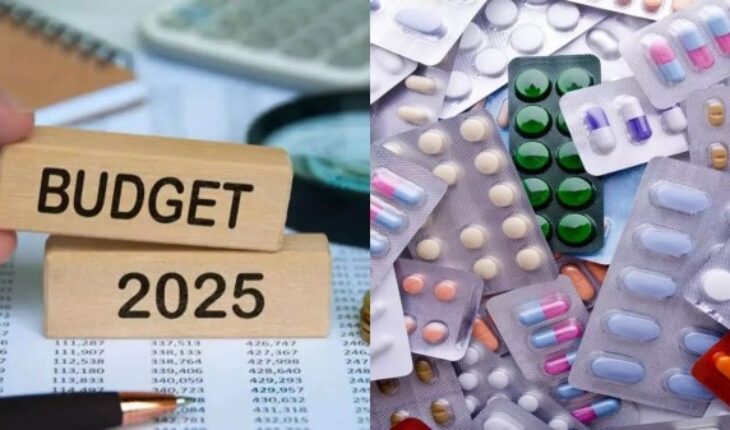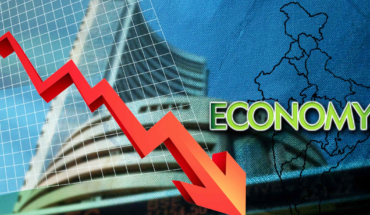The phrase, ‘Expectations are the root of all heartache’, sums up the message regarding expectations from people or situations, and subsequent disappointments when those expectations are not met. With respect to the Union Budget, all industries and stakeholders have expectations from the Union Finance Minister, and the finance minister is expected to satisfy all of them. The finance minister has many constraints, and is expected to consider many competing interests, priorities at a given point of time, resources available to name a few while accommodating different stakeholders. Industries also vary in size, nature, stage of development, support required, and influence. Accordingly, expectations of respective industries get considered, and get accommodated. Pharmaceutical Industry in India is now known as the Pharmacy of the World.
For FY 2023-24, India’s pharmaceutical industry was valued at US $ 50 bn, out of which exports contributed US $ 26.5 bn and the domestic consumption contributed US $ 23.5 bn (PIB Release dated December 17, 2024). Ratio of exports to domestic consumption was 53:47. India’s pharmaceutical industry is ranked the world’s third largest in volume terms. This reflects the strength of Indian pharmaceutical industry in international markets as net foreign exchange earner, as well as the capacity to serve domestic market and international markets. Product portfolio of pharmaceutical companies has gone beyond generic products or vaccines, and now covers biologics, biosimilars, bulk drugs, Complex Generics, Medical Devices, etc.
Given the diverse nature of pharmaceutical industry, growth of biologics, biosimilars, emergence of medical devices industry, and developments in MedTech, each component of value chain requires attention in the Union Budget for holistic development of the industry, be it R&D, manufacturing, or exports.
Exports form major chunk of revenue for many pharmaceutical companies in India. Pharmaceutical industry from India as a whole, now heavily relies on exports so credit schemes and policies which support exports, are desirable. Export of medical devices has shown encouraging signs. Export incentives presently range from 0.6% to 0.9% under the Remission of Duties and Taxes on Export Products (RoDTEP) Scheme that became applicable from January 1, 2021. This Scheme had replaced the existing Merchandise Exports from India Scheme (MEIS).
Changing nature of pharmaceutical business demands attention in all areas of value chain. Research and Development (R&D) in pharmaceutical sector is crucial, cost-intensive, and time-consuming. At the same time, the risky nature of drug discovery does not go well for each pharma enterprise. Due to this, pharmaceutical enterprises primarily rely on grants and soft loans in addition to their own resources for carrying out the R&D. Continued focus on R&D is needed to transform India into a value-driven economy as Indian pharma industry is still 14th in terms of value of production.
The size of the Indian pharmaceutical Industry has grown from about $15.2 billion in 2014 to $50 Bn in 2024. To maintain existing momentum, appropriate interventions are required from time to time. Like any other year, industry leaders have expressed their expectations from the upcoming Union Budget 2025-26 that is going to be presented on February 1. R&D tax incentive is widely expressed as a major demand since it was reduced to 100%. In his budget speech in 2016, the then Finance Minister Arun Jaitley had announced the reduction of the weighted deduction from 200% in FY 2017-18 to 150% in 2019-20. From the FY 2020-21, weighted deduction on Research and Development (R&D) expenses was reduced to 100%. Pharmaceutical companies kept on demanding R&D tax incentive as these companies have to incur R&D expenses outside their facilities too which include bio-equivalence studies, clinical studies, patent filings, product registration to name a few. Research-linked Incentives (RLI) has remained a consistent demand. Research on Orphan drugs needs encouragement through incentives. From government perspective, underlying rationale appeared that there was demand from corporate sector for reduction of corporate tax rate and at the same time, there were weighted deductions.
A key expectation remains the focus on ‘increasing healthcare funding’ as 47 per cent contribution to India’s pharma industry is from domestic consumption. The government health expenditure’s share in India’s total Gross Domestic Product (GDP) has increased from 1.13% in 2014-15 to 1.84% in 2021-22. Further, the share of Government Expenditure in Total Health Expenditure has increased from 29.0% in 2014-15 to 48.0% in 2021-22 as per the National Health Accounts Estimates for India 2020-21 and 2021-22 which were released on September 25, 2024. A decline in out-of-pocket expenditure out of total health expenditure has been observed from 64.2% in 2013-14 to 39.4% in 2021-22. National Health Policy (2017) had recommended that the government should spend 2.5% of GDP on healthcare by 2025.
Production-linked Incentive (PLI) Schemes, Promotion of Bulk Drug Parks and Medical Devices, Pharmaceutical Technology Upgradation Assistant Scheme (PTUAS), Jan Aushadhi Scheme, Promotion of Research and Innovation in Pharma Med-Tech (PRIP), and the scheme on Human Resource Development in Medical Devices Sector need allocation as higher allocation will help respective players participating in these areas.
With technological advancements, emphasis is on application of Gen AI and other tools by pharmaceutical companies too. Sustainable manufacturing in pharma and integrating sustainability with advanced technologies is the need of the hour. Measures and incentives are needed to boost investments in AI in general. Pharma-specific areas are likely to be benefited. Top pharma companies globally are extensively applying AI and other such tools in research, clinical trials, and other upstream activities. Globally, countries want to remain competitive in this domain, e.g., The US President Donald Trump on his 2nd day of his Presidency announced ‘Stargate Project’, a private sector investment of up to $500 billion to fund infrastructure for artificial intelligence, aiming to outpace rival nations in the business-critical technology.
Industry leaders have voiced the concern from the point of view of end-users/patients, e.g., Kiran Mazumdar-Shaw stated that cancer-related drugs are expensive so any drug used for a chronic therapy with a monthly cost of treatment exceeding Rs. 5,000 should be exempted from tax altogether. Chronic patients have to buy medications by paying a tax of 12 per cent which is quite high as medicines for such patients are necessity, and not luxury. In a similar manner, import duties need to be reduced on input materials, consumables, and highly sophisticated & costly instruments which are required to develop precision medicines used in cancer treatment. This will reduce out-of-pocket cost of patients. In July 2024 when the Finance Minister in her 7th consecutive Budget speech brought down the customs duty on X-ray tubes used in medical X-ray machines, and allowed duty-free import of three medicines, Trastuzumab, Deruxtecan, Osimertinib, and Durvalumab from existing 10 per cent customs duty, then the move was widely appreciated.
The Union Budget determines the roadmap for different sectors for a short period of one year but it has the potential to halt or ensure continuity in the journey towards becoming a developed nation, or Viksit Bharat. Pharma and Meditech sectors collectively need adequate attention in budget as in first four months of FY 2024-25, it became the 4th largest merchandise export item for the Indian economy.
Dr. Anil Kumar Angrish, Associate Professor (Finance and Accounting), Department of Pharmaceutical Management, NIPER S.A.S. Nagar (Mohali), Punjab
Disclaimer: Views are personal and do not represent the views of the Institute.






